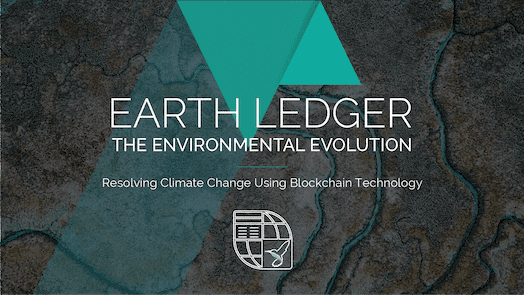- The global demand for air conditioning is growing fast.
- Most air-conditioning units are highly inefficient and use environmentally damaging refrigerants.
- The Global Cooling Prize was launched in 2018 to drive innovation in cooling technology.
- Its finalists were announced last year – could their solutions be the answer?
The energy demand for space cooling globally will more than triple over the next 30 years, and will account for about 37% of global electricity demand growth by 2050. The International Energy Agency (IEA) predicts that 10 new air conditioners will be sold every second for the next 30 years. To meet this massive uptick in demand for cooling, the total power generation capacity dedicated to this end use will need to increase from 850 gigawatts (GW) in 2016 to 3,350 GW in 2050. This increase is equal to the total electricity demand of the US, Europe and India combined and will require an additional investment of over $1.7 trillion in power generation capacity alone (excluding the associated costs of fuel and transmission and distribution infrastructure), according to research by the Rocky Mountain Institute (RMI).
Four countries—India, China, Brazil, and Indonesia—will account for 60% of the total additional capacity and 75% of the total investments required globally to meet the 2050 cooling demand under this business-as-usual scenario. Adding fossil-fuel-powered capacity to power this additional demand will not only derail us from our Paris Climate goals – it will also outpace planned grid infrastructure and impede other critical developmental investments in these developing countries.
The demand for cooling is inevitable and important
The last five years alone have been the hottest on record. Forty percent of the global population live in the tropics, and many are at potential risk of heat stress for more than 20 days per year. Of the 2.8 billion people living in the hottest parts of the world, only 8% currently have air conditioners. Air conditioning – once regarded as a luxury – is now necessary for development and as a solution to the problem of heat stress.
This unprecedented and inevitable growth in cooling demand is driven by global warming, urbanization and population growth. The cooling dilemma the world faces today is how to provide people access to cooling without further warming the planet.
Business-as-usual cooling will make the climate crisis worse
The most common air conditioners around the world are room and residential air conditioners (RACs). According to a recent report by RMI, developing countries are going to see a fivefold increase in demand for these entry-level air conditioners over the next three decades. RACs typically contribute indirect and direct emissions – from the electricity they consume and from the refrigerant they use, respectively.
Most RACs in the market today work on 100-year old vapour-compression technology. The best-in-class RACs have only achieved about 14% of their theoretical maximum efficiency; RMI’s research suggests that entry-level RACs, on the other hand, only achieve 6–8%.
Adding more solar to the grid will not solve the problem of indirect emissions due to the inherent inefficiency of RACs. In 2017, the 94 GW of total solar generation deployed globally was eclipsed by the incremental load of new RACs added to the grid, estimated at approximately 100 GW.
Under business as usual, these RACs will consume at least 5,400 terawatt-hours (TWh) of electricity by 2050 – roughly equivalent to the current annual electricity consumption of the US, Japan and Germany combined. India alone would contribute one-third of this new demand. Overall, direct and indirect emissions from RACs alone could contribute to 132 gigatonnes (GT) of CO2 emissions by 2050, putting us on a path for a further 0.5˚C of global warming by the end of the century – and preventing us from achieving our Paris climate goals.
We can’t wait for the business-as-usual scenario to play out when this is one of the single biggest end-use risks to our climate – and one that can be solved.

The future of cooling innovation is here
If we could make the most commonly sold, entry-level RACs four to five times more energy efficient and use low or no global warming potential (GWP) refrigerants, we could mitigate the need for an additional 2,000 GW of power generation capacity – a figure equivalent to the total global coal-powered plant capacity in operation today.
The Global Cooling Prize – which was launched by RMI, the Government of India and Mission Innovation in 2018 – set out to do just that. The prize invited innovators from across the globe to submit their ideas for an affordable breakthrough cooling solution that had at least five-times less climate impact than the most commonly sold RAC on the Indian market today. More than 2,100 teams from 95 countries registered for the prize. Out of 139 detailed technical applications submitted by teams from 31 countries, the top eight solutions were shortlisted as finalists by the prize coalition in November 2019. Collectively, the finalists comprise around 25% of the total market share of RACs globally and have the potential to drive massive transformation in the industry.
These cooling solutions give a sneak preview into the future of cooling innovation. Among the finalists’ solutions are: smart hybrid technology to optimize on efficiency and handle temperature and humidity separately; no or low-GWP climate-friendly refrigerants; reusing system-generated waste heat and water; smart controls, sensors, and automation to optimize hybrid operation based on outdoor and indoor conditions; or integration of a small solar panel on the outdoor unit to significantly reduce the overall climate impact. You can read more about the finalists’ technologies here.
Scaling breakthrough cooling innovations for a cooler planet
We need to imagine a world in which everyone can afford a better quality of life while looking out for the climate. Access to cooling is not only a climate issue, but also an equity issue as it improves the health, productivity and developmental outcomes of the most vulnerable sections of our society – many of whom live in hot and humid climates.
When scaled, the breakthrough cooling innovations emerging from the Global Cooling Prize have the potential to mitigate up to 75 GT CO2-equivalent emissions by 2050 and up to 0.5˚C of warming by 2100, all while providing people access to a better quality of life. This transition to a radically more climate-friendly breed of RAC will require a concerted effort by policy-makers, business leaders and financial institutions from around the globe to build a supportive market environment.
In this new age of globalization, the heat is on for us to expedite solutions for the climate. So let’s strive to challenge business as usual to provide everyone access to cooling without further warming the planet.









